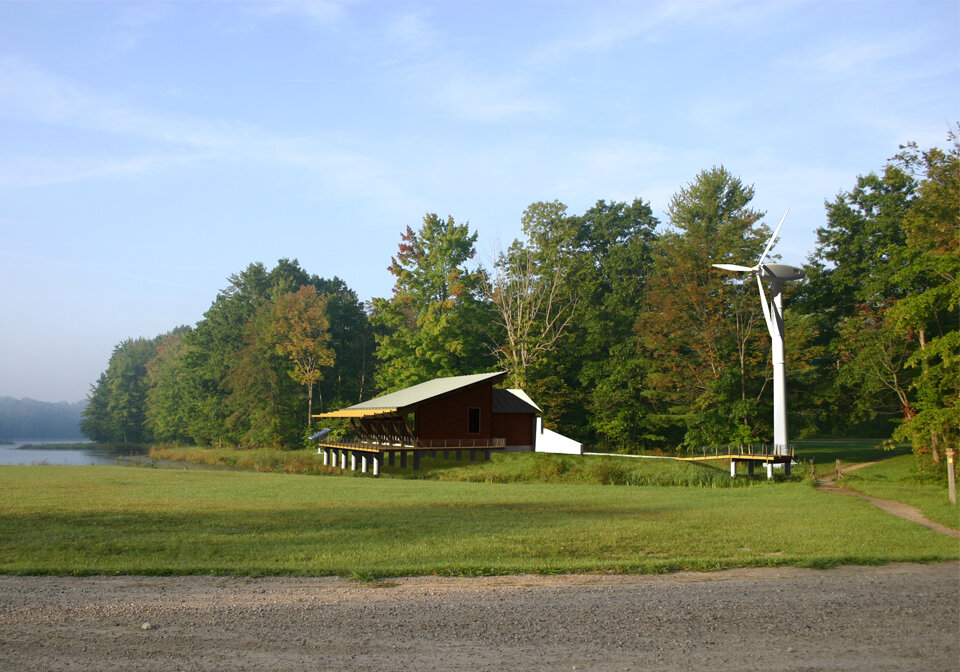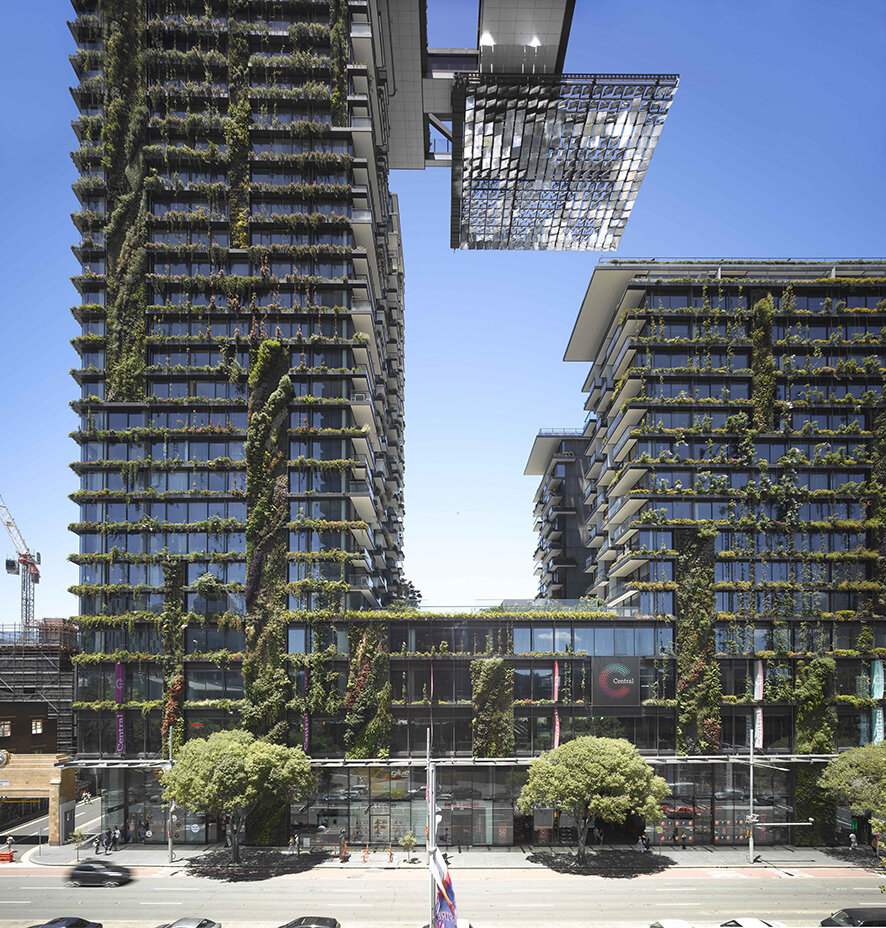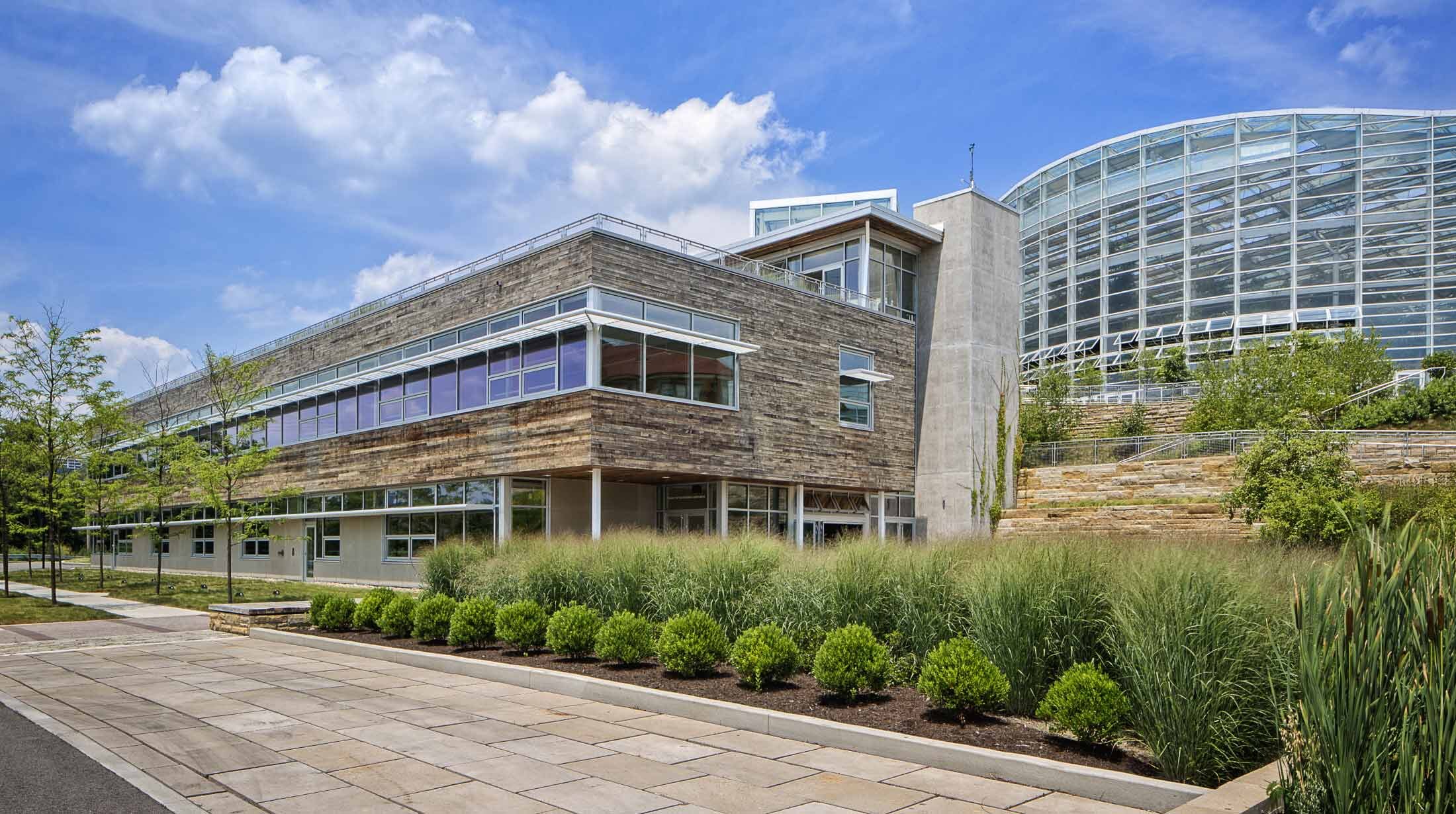Environmentally Conscious Architecture & Sustainable Building Design
“You have to hold yourself accountable for your actions, and that’s how we’re going to protect the Earth.” – Julia Butterfly Hill
Sustainable building design works to build and renovate buildings with energy and resource conservation technology, renewable and recyclable materials, and innovative and creative designs. Through environmentally conscious architecture and sustainable building design, the construction industry can work to reduce waste through its commitment to sustainability and minimizing environmental impact. As architects, we have adopted the 2030 Challenge and are striving for dramatic reductions in greenhouse gas emissions and energy consumption in the buildings we design.
Table of Contents
- What is Sustainable Building Design
- How Does Architecture Affect the Environment
- How Architects Can Create Environmentally Conscious Architecture
- Start Your Green Building Today
What is Sustainable Building Design
According to Encyclopedia.com, “Sustainable Architecture refers to the practice of designing buildings which create living environments that work to minimize the human use of resources.” Nature has sustained life on our planet for billions of years, and the places we make should share the same resiliency and fundamentals in supporting our well-being and equity. The buildings we design should improve the enjoyment and productivity of our lives through thoughtful and intentional places that enhance human health and well-being.
There are a few sustainable building design principles that environmentally conscious architecture should follow. These are identified by The US Green Building Council, the WELL Building Standard, Living Building Challenge, and the GSA (U.S. General Services Administration) they include:
optimize site potential
minimize non-renewable energy consumption
use environmentally preferable products
protect and conserve water
enhance indoor environmental quality
optimize operational and maintenance practices.
impact on human health + well-being
Impact on equity and community
How Does Architecture Affect the Environment?
The question of “How does architecture affect the environment?” is extensive as the impact of architecture on our world is multi-faceted. From energy consumption, building material, and form, architecture has the ability to leave a positive green footprint on our earth for many years. Throughout history, we have been working as a community to re-think and re-imagine buildings in order to create a better connection between our buildings and our environment. The urban built environment is responsible for 75% of annual global GHG emissions: buildings alone account for 39%. Left unchecked this will result in areas of our planet becoming uninhabitable.
According to the DOE (aka the Department of Energy), buildings, on average, use 22.5 kilowatts per hour per square foot. Most people don’t notice that buildings utilize a variety of fossil fuels including coal, natural gas, and fuel oil. They also use renewable sources like biomass, geothermal energy, and wind energy. Without the use of energy, we cannot build or operate our buildings, however, we must seek ways to reduce the energy used by buildings and shift to renewable energy sources for operation.
How Architects Can Create Environmentally Conscious Architecture
Architects can improve sustainable building design throughout the process from conception to usage. We can optimize building spaces to reduce building sizes and select materials that are eco-friendly and sustainable like recycled glass and steel, utilize new biocomposites, sustainable wood materials, and use green roofs to minimize the heat island effect. We can improve our connection to nature by careful site selection and proper building orientation, leveraging window placement to promote natural ventilation + daylighting, reduce energy through improved building performance, and reduce embodied energy through careful selection of materials. Through environmentally conscious architecture, we can improve the quality of life for those who inhabit and work in our buildings by creating robust and healthy spaces that create communities with equitable access to all people regardless of physical abilities, age or socioeconomic status.
The 2030 Challenge
Our urban environments are responsible for 75% of annual global emissions (39% from buildings). Through environmentally conscious architecture, we can help address climate change and meet the Paris Climate Agreement targets.
To propel the creation of environmentally conscious architecture, Architecture 2030 developed the 2030 Challenge in 2006 in hopes of achieving the following:
All new buildings, developments and major renovations shall be designed to meet a fossil fuel, GHG-emitting, energy consumption performance standard of 70% below the regional (or country) average/median for that building type.
At a minimum, an equal amount of existing building area shall be renovated annually to meet a fossil fuel, GHG-emitting, energy consumption performance standard of 70% of the regional (or country) average/median for that building type.
The fossil fuel reduction standard for all new buildings and major renovations shall be increased to:
80% in 2020
90% in 2025
Carbon-neutral in 2030 (using no fossil fuel GHG emitting energy to operate).
studioTechne is a signatory to this agreement and we are working to create green, environmentally conscious buildings.
Examples of Environmentally Conscious Architecture
Beaumont Environmental Resource Center
The Beaumont ERC is designed as a living experiment where the building will showcase the latest sustainable building practices and provides a base for research and impact studies, as well as education of native plant, animal and aquatic life. The building structure and siding was reclaimed from an on-site barn and all of the energy required for the building is provided by wind and solar. Rainwater is harvested, cleaned and used for non-drinking uses, and compostable toilets ensure proper treatment of the waste stream.
One Central Park
One Central Park, located in Sydney, Australia, exemplifies a sustainable building design by creating a home for over 250 species of Australian plants and flowers. These plants are multi-functional as they add to design, provide shade, and compared to most “sky scrapers”, this unique building utilizes 25% less energy.
Phillips Conservatory & Botanical Gardens
The Phillips Conservatory and Botanical Garden utilizes environmentally conscious architecture to create a zero-net energy consumption. To do so, they leverage renewable resources like sun and wind with solar panels, geothermal walls, rainwater, and wind turbines. To top it off, this building is complete with a rooftop garden!
Start Your Green Building Today
It’s not too late to start taking care of our Home. As architects we can work to improve our communities through environmentally conscious architecture and community design. Contact studioTechne | Architects and learn how we can work together.






